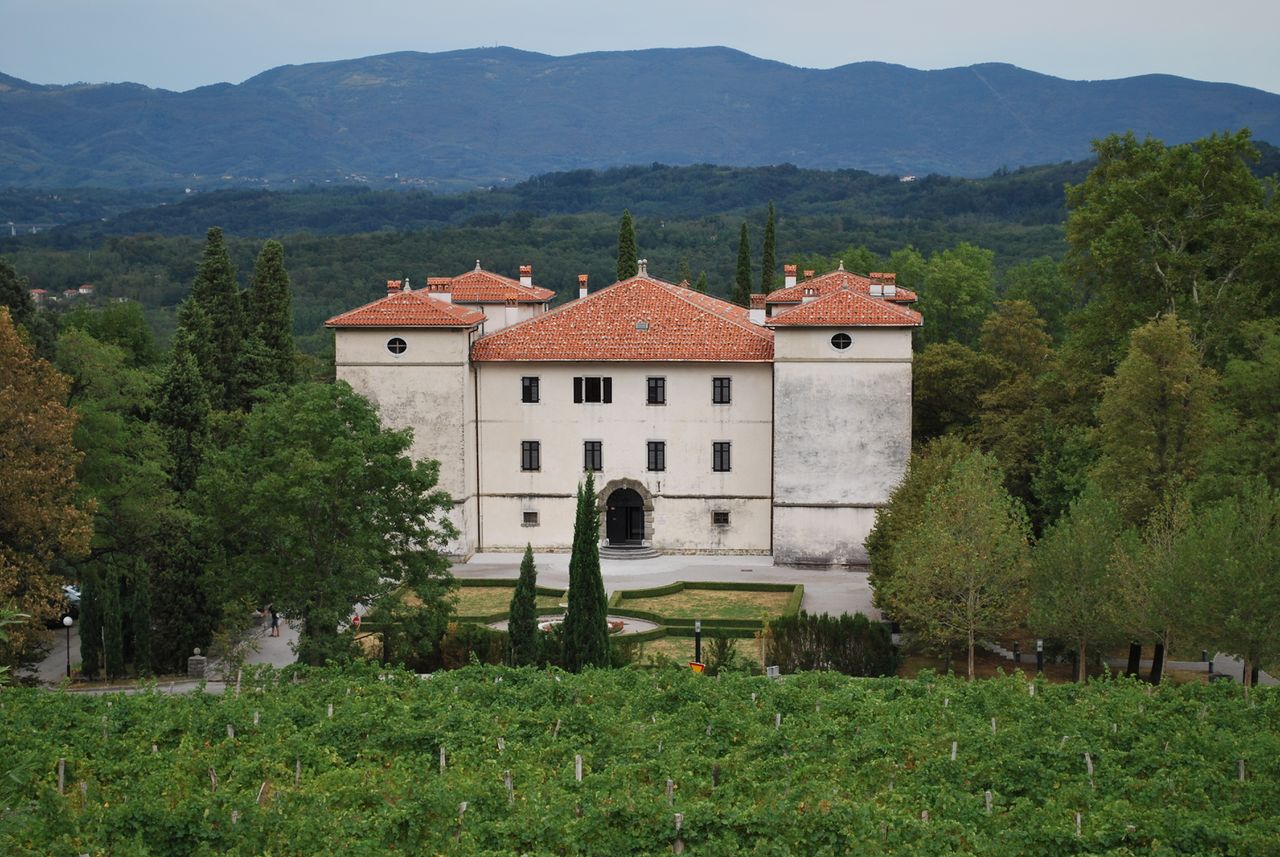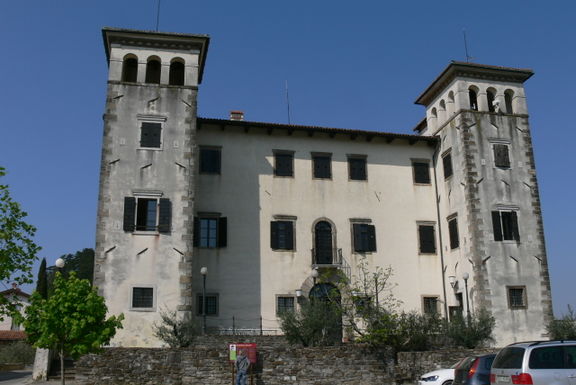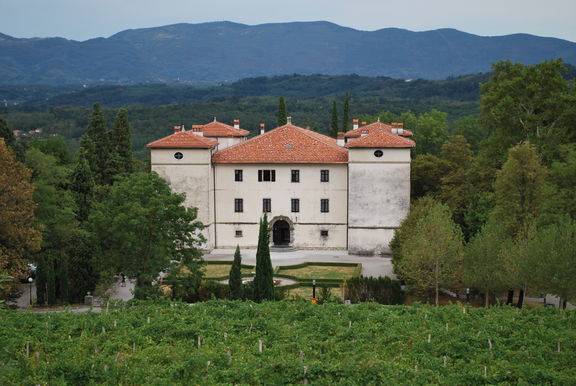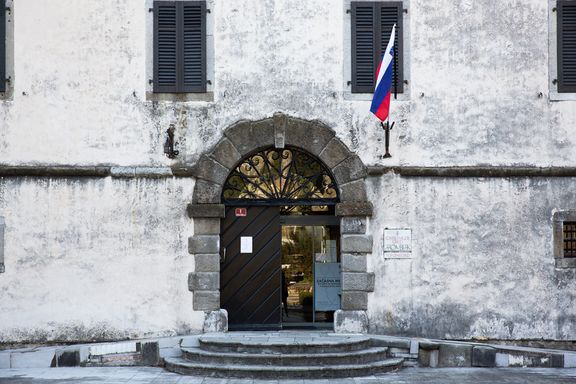Goriška Museum
-
21 Jan 2018
Bosnia and HerzegovinaSarajevoZemaljski muzej BiHThe exhibition The stamp of Keltic horses' hoofs curated by Miha Mlinar (Tolmin Museum) and Teja Gerbec (Goriška Museum), where the findings from the Bizjak's Homestead in Kobarid and from the Kamenjača in Breza next to Sarajevo are featured together,
-
to
1 Jul 2011
15 Sep 2011
CroatiaPulaAmphitheater Gallery of the Archaeological Museum of IstriaWith a Fibula into Fable exhibition organised by Koper Regional Museum, Sergej Mašera Maritime Museum, Goriška Museum, Tolmin Museum, Ptuj – Ormož Regional Museum, and Notranjska Museum, Postojna
History
The beginnings of institutionalised museum activities in Goriška go back to 1861, when Goriška Provincial Museum was founded in the region's centre of Gorica ("Gorizia"), now in Italy. Its collections presented various remains of the region's past without paying attention to individual ethnicity. Exhibitions organised in that period also carefully avoided all references to the presence of Slovenes in the region. The plan to found a national museum in Goriška, presented in the early 20th century, was thwarted by World War I and all of the collected material was lost. During the Italian occupation of Primorska the idea of establishing a school museum here also had to be abandoned. The present museum came about as a result of conditions after World War II, when the new state border between the then Yugoslavia and Italy placed the town of Gorica-Gorizia in Italy and the remaining part of the Goriška region which had previously gravitated towards the town was left without a centre. A study library and district museum were established in the fast-growing town of Nova Gorica.
The Goriška Museum had its premises initially within the primary school of Solkan. In 1954 it moved to the restored Renaissance-style Kromberk Castle, an early 17th-century reconstruction of a fortress erected in the first half of the 13th century by Count Henrik of Dornberk. In 2004 the museum was reorganised by the current Municipality of Nova Gorica as the only founder although it covers eleven municipalities in the Upper Vipava Valley, Goriška Brda and Kras.
Programme and mission
In addition to its traditional museum activities focused on local studies in the fields of history, ethnology, archaeology, art history, and natural history, the Goriška Museum carries out also activities in the field of fine arts from the early 20th century onwards. It houses a conservation and restoration workshop in part of the Villa Bartolomei in Solkan. The Goriška Museum Library keeps the basic methodological books of museology, large collection of foreign professional periodical publications, minority periodical publications, and books concerning Goriška region. The Audiovisual Department documents and presents intangible cultural heritage and collects and keeps audiovisual records. The Goriška Museum cooperates with related cultural institutions and the Slovenian minority in Italy, especially in the Friuli-Venezia Giulia.
Venues and branches
The museum's main quarters are in Kromberk Castle. Dislocated units are: Dobrovo Castle; the Villa Bartolomei Museum Collection, Solkan; Alojz Gradnik and Ludvik Zorzut Memorial House, Medana; the Museum Collection Ajdovščina; Memorial Museum of Hero Mihajlo, Šempas and the Museum Collection, Sežana.
The museum has collaborated on the establishment or museological development of the numerous heritage sites, museums and galleries in the region, among them the Štanjel Castle with the Lojze Spacal Gallery and the Karst House, Štanjel; Avgust Černigoj Gallery, Lipica; the Memorial Collection of the Kosovel Family, Tomaj; the Trenta Lodge TNP Information Centre and Museum; the Riko Debenjak Gallery, Kanal.
Museum on the Border
A number of sites is connected with the heritage of everyday life on the border, including the Museum Collection Railway Station in Nova Gorica, the Military Watchtower in Vrtojba and the collections in Miren and Pristava, both in the former custom-office buildings.
Publishing
The Goriška Museum publishes research results of its activities in its own monographic publications, catalogues and in the periodical Goriški letnik [Miscellany of the Museum], published annually since 1974. Sporadically a special issue of Berilo [Reader] is published, covering original ethnographic and microhistory material from the region. In 2017 the museum started publishing also audiovisual media linked to its programme. Apart from the exhibition catalogues all these publications are in Slovenian language only.
See also
Some of the dislocated permanent collections
Related collections and sites
- Avgust Černigoj Gallery, Lipica
- Riko Debenjak Gallery
- Štanjel Castle
- Lojze Spacal Gallery and the Karst House, Štanjel
- Trenta Lodge TNP Information Centre and Museum





